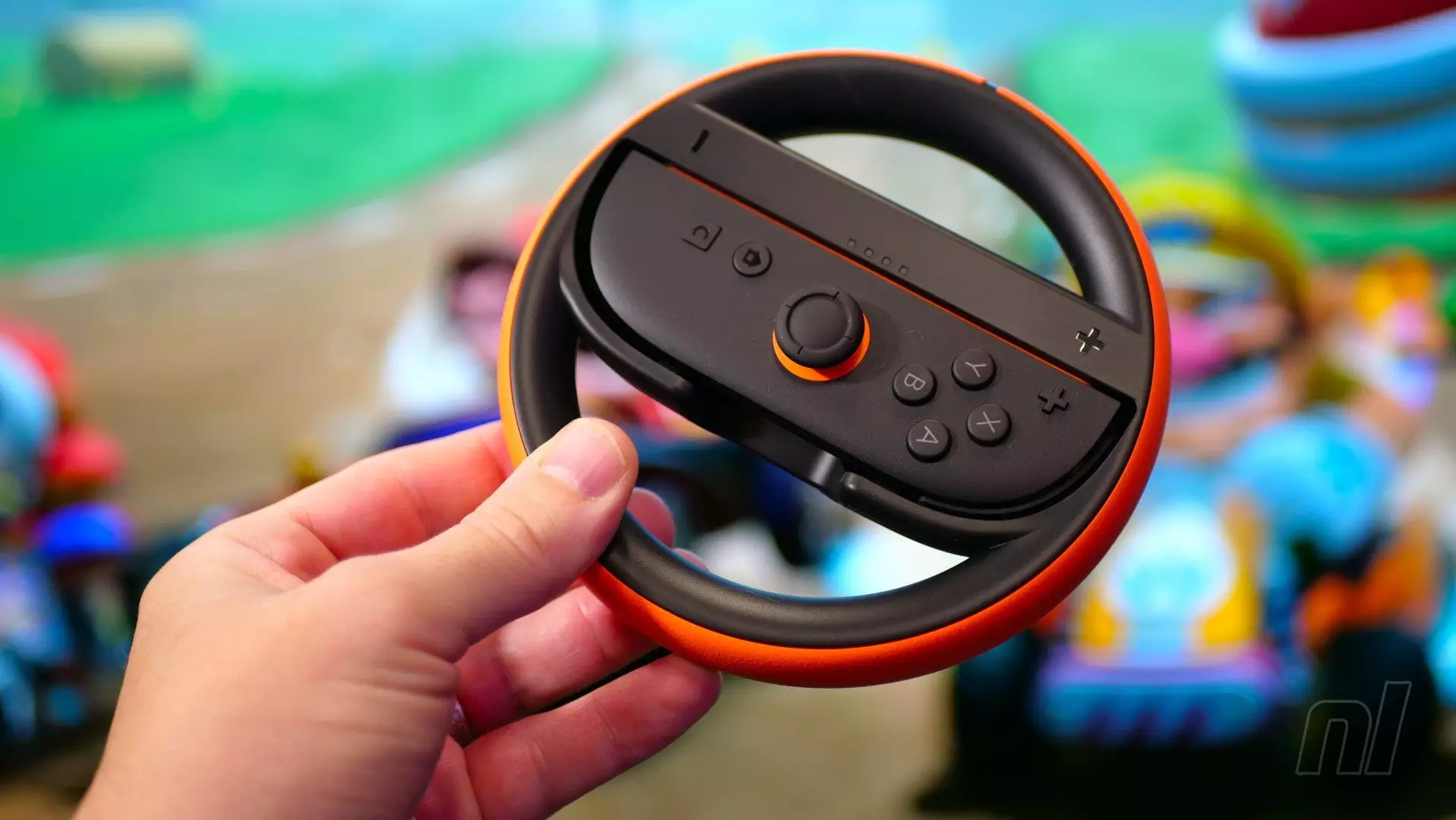Since Nintendo pioneered the use of motion controls with the Wii, the gaming community has been both enamored and frustrated by the accessories that come along with this trend. The infamous Wii Wheel, a plastic shell designed to simulate steering, became a staple of casual gaming sessions. However, experienced players quickly recognized its shortcomings: it was more an obstacle than an enhancement, often hindering precision in fast-paced games like Mario Kart. Moving into the Switch era, Nintendo has continued this tradition, releasing what can only be described as upgraded yet fundamentally similar wheel peripherals. These new wheels, designed to fit the larger Joy-Con controllers, are marketed as the next step— but do they genuinely elevate gaming experiences, or are they just another plastic afterthought?
The latest iteration of these wheels introduces subtle but meaningful changes in design and functionality. They have been resized to accommodate the bulkier Joy-Con 2 controllers, which makes sense considering the hardware upgrades. Aesthetics have been prioritized, with a cleaner look that eschews any visible screws and features a brightly colored grip band—albeit a minor visual touch, it offers improved comfort and grip during extended gaming marathons. The use of magnets to securely attach the Joy-Con to the wheel is a smart addition, streamlining the setup process by making the controllers click into place effortlessly while facilitating automatic pairing with Switch 2. These design tweaks suggest Nintendo’s ongoing effort to refine motion accessories, but superficial improvements don’t always translate into enhanced gameplay.
The Reality of Precision and Control: Do These Wheels Deliver?
Despite their sleek design and convenience, the fundamental question about these wheels remains unaltered: do they truly improve gameplay, or are they just novelty items? As with past versions, their primary appeal lies in providing an immersive, if somewhat theatrical, experience. The act of physically turning a plastic wheel can add a layer of fun and engagement, especially in a casual setting. For children or players seeking a lighthearted approach, this may make Mario Kart sessions more memorable and less repetitive. However, the illusion of realism quickly falls apart when you realize how imprecise this control method can be.
The floating nature of the wheel—without a real steering column—limits the player’s ability to gauge turns accurately. This often results in over- or under-turning, especially during tight corners or high-speed sections. The physical sensation of twisting the wheel differs significantly from the nuanced input provided by the standard Joy-Con or dedicated Pro Controller. For casual players, this discrepancy might be tolerable or even entertaining, but for serious racers seeking competitive precision, these wheels fall noticeably short.
Furthermore, prolonged use can lead to fatigue and frustration. Holding the wheel in a certain way for accuracy is easier said than done when you’re battling the inherent imprecision of free-floating plastic. This makes the accessory more suitable for spontaneous fun rather than extended gaming sessions demanding consistency. The reality is clear: these wheels are toys, not tools, and their value hinges largely on the player’s expectations.
The Social and Economic Dimensions: A Worthy Investment for Casual Fun?
Given their modest price point—roughly £16.99 or $25 for a pair—the wheels present an attractive proposition for casual players or families. They lower the barrier to multiplayer fun, enabling four-player sessions without the need for expensive controllers or complex setups. The affordability invites spontaneous gaming parties, where the focus shifts from winning to sharing laughs and creating memorable moments.
However, the affordability conceals a deeper truth about the product’s purpose. These accessories are less about professional-quality control and more about enhancing social bonding through silliness and spontaneity. When everyone uses the same type of wheel, the skill gap created by precise controls diminishes, and the emphasis shifts back to fun. It’s a clever way to level the playing field for less competitive players, turning what could be a frustrating experience into a communal one.
Yet, from a critical perspective, it’s undeniable that these wheels are somewhat superficial. They do little to advance the core gameplay experience or offer meaningful innovation. Instead, they capitalize on nostalgia, the visual appeal of physical motion, and the market’s appetite for inexpensive, family-friendly gaming accessories. The question remains: are they essential, or just an amusing distraction that might detract from the core gaming experience if relied upon too heavily?
Final Thoughts: A Toy for Fun, Not a Gaming Revolution
At the end of the day, Nintendo’s new switch wheels serve as a reminder that not all innovation is about technological leaps—sometimes, it’s about creating a sense of playfulness that encourages shared enjoyment. They are cheap, simple, and unlikely to satisfy the needs of serious gamers seeking accuracy and performance. Instead, they offer fleeting moments of amusement, perfect for casual parties or young children discovering gaming for the first time.
In the broader context of gaming, these accessories epitomize a recurring theme: how much of the so-called advancements are real improvements versus clever marketing tricks? The truth is that the joy of gaming often resides in the experience, not the perfection of control. While these wheels might not redefine Mario Kart or racing peripherals, they undeniably add a layer of whimsical chaos—something that, in the right setting, is worth appreciating. But for those chasing precision and excellence, sticking to traditional controls remains the smarter choice.

